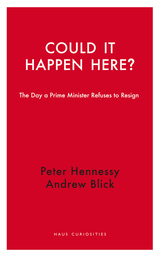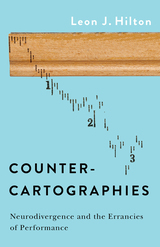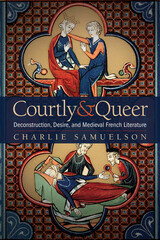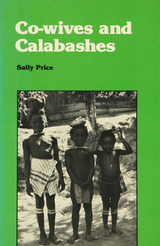2 books about Stasiowski, Maciej

Anarchitectural Experiments
When Unbuilt Designs Turn to Film
Maciej Stasiowski
Intellect Books, 2022
A deeply researched exploration of the influence of simulation and cinematic design on visionary or speculative architecture.
This book outlines the impact of film and animation on architectural representation through key projects. The opening analysis is useful in contextualizing speculative architectural projects, while the later chapters link the theory to imagery. To support his argument, Maciej Stasiowski here curates a diverse collection of interesting case studies that are accessible and easy to read.
Through its comprehensive review of speculative architecture and various media that describe it, Stasiowski’s book sets itself apart from other works in the discipline by discussing speculative projects that engage with cinematic strategies of portrayal and specifically the effect that modern technologies have on the subject now and in its potential futures. This thorough examination of the use of cinema and animation as a method of architectural visualization offers insights into a converging field of architectural and filmic disciplines and will appeal to architects and designers, filmmakers, academics, artists, set designers, and film production designers.
This book outlines the impact of film and animation on architectural representation through key projects. The opening analysis is useful in contextualizing speculative architectural projects, while the later chapters link the theory to imagery. To support his argument, Maciej Stasiowski here curates a diverse collection of interesting case studies that are accessible and easy to read.
Through its comprehensive review of speculative architecture and various media that describe it, Stasiowski’s book sets itself apart from other works in the discipline by discussing speculative projects that engage with cinematic strategies of portrayal and specifically the effect that modern technologies have on the subject now and in its potential futures. This thorough examination of the use of cinema and animation as a method of architectural visualization offers insights into a converging field of architectural and filmic disciplines and will appeal to architects and designers, filmmakers, academics, artists, set designers, and film production designers.
[more]

Watch this Space
Exploring Cinematic Intersections Between the Body, Architecture and the City
Edited by Howard Griffin and Maciej Stasiowski
Intellect Books, 2024
A collection that explores evolving interdisciplinary rhetoric across spatial design disciplines.
Watch this Space examines key emerging and evolving practices, theories, and methodologies that operate in the blurred boundary between spatial design disciplines and moving image studies more broadly. The collection is premised on the argument that the understanding of “space” in these areas continues to expand, reaching the point in which it blurs with multiple other disciplines including media art, cultural studies, art practice, and more. The result of this evolving interdisciplinary understating of space in design disciplines and moving image studies is an expanded field of haptic-visual practice and theory that can be investigated as both a material and an image-based construct.
The work engages with an evolving set of ideas, underlining how each of its primary discipline areas now increasingly incorporates tools and methodologies from each other’s fields. For example, architects routinely engage with cinematic practice as a means of exploring space; cultural theorists inspect filmic space as a two-dimensional surrogate of the real; media artists incorporate knowledge of spatial design in video installations; and filmmakers create spaces on screen that are informed by architectural theory. This all follows what can be defined as a discursive turn in our view of spatial relationships across disciplines which, by definition, is complex, eclectic, occasionally contradictory, and at times characterized by surprising confluences.
The varied essays collected here explore the diversity of how we today define, understand, and engage with notions of the body in architectural–urban space. It does so through a triadic structure that progresses from haptic relationships of the body in architectural space, through film readings of represented space in mainstream cinema, to experimental spatial projects inspired by film and the moving image. This tripartite structure specifically encourages a look across disciplines, broadening architectural, urbanist, media, and cinematic concerns through insightful case studies.
Watch this Space examines key emerging and evolving practices, theories, and methodologies that operate in the blurred boundary between spatial design disciplines and moving image studies more broadly. The collection is premised on the argument that the understanding of “space” in these areas continues to expand, reaching the point in which it blurs with multiple other disciplines including media art, cultural studies, art practice, and more. The result of this evolving interdisciplinary understating of space in design disciplines and moving image studies is an expanded field of haptic-visual practice and theory that can be investigated as both a material and an image-based construct.
The work engages with an evolving set of ideas, underlining how each of its primary discipline areas now increasingly incorporates tools and methodologies from each other’s fields. For example, architects routinely engage with cinematic practice as a means of exploring space; cultural theorists inspect filmic space as a two-dimensional surrogate of the real; media artists incorporate knowledge of spatial design in video installations; and filmmakers create spaces on screen that are informed by architectural theory. This all follows what can be defined as a discursive turn in our view of spatial relationships across disciplines which, by definition, is complex, eclectic, occasionally contradictory, and at times characterized by surprising confluences.
The varied essays collected here explore the diversity of how we today define, understand, and engage with notions of the body in architectural–urban space. It does so through a triadic structure that progresses from haptic relationships of the body in architectural space, through film readings of represented space in mainstream cinema, to experimental spatial projects inspired by film and the moving image. This tripartite structure specifically encourages a look across disciplines, broadening architectural, urbanist, media, and cinematic concerns through insightful case studies.
[more]
READERS
Browse our collection.
PUBLISHERS
See BiblioVault's publisher services.
STUDENT SERVICES
Files for college accessibility offices.
UChicago Accessibility Resources
home | accessibility | search | about | contact us
BiblioVault ® 2001 - 2025
The University of Chicago Press









